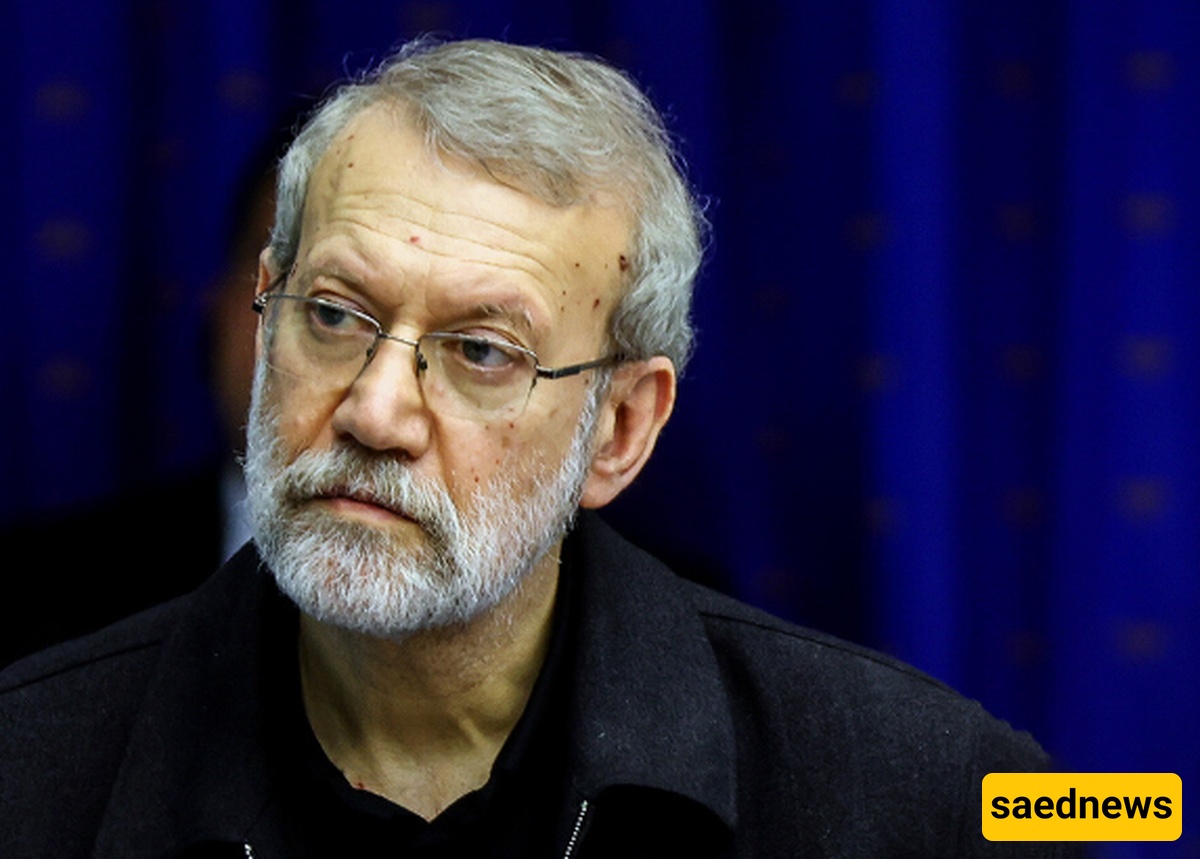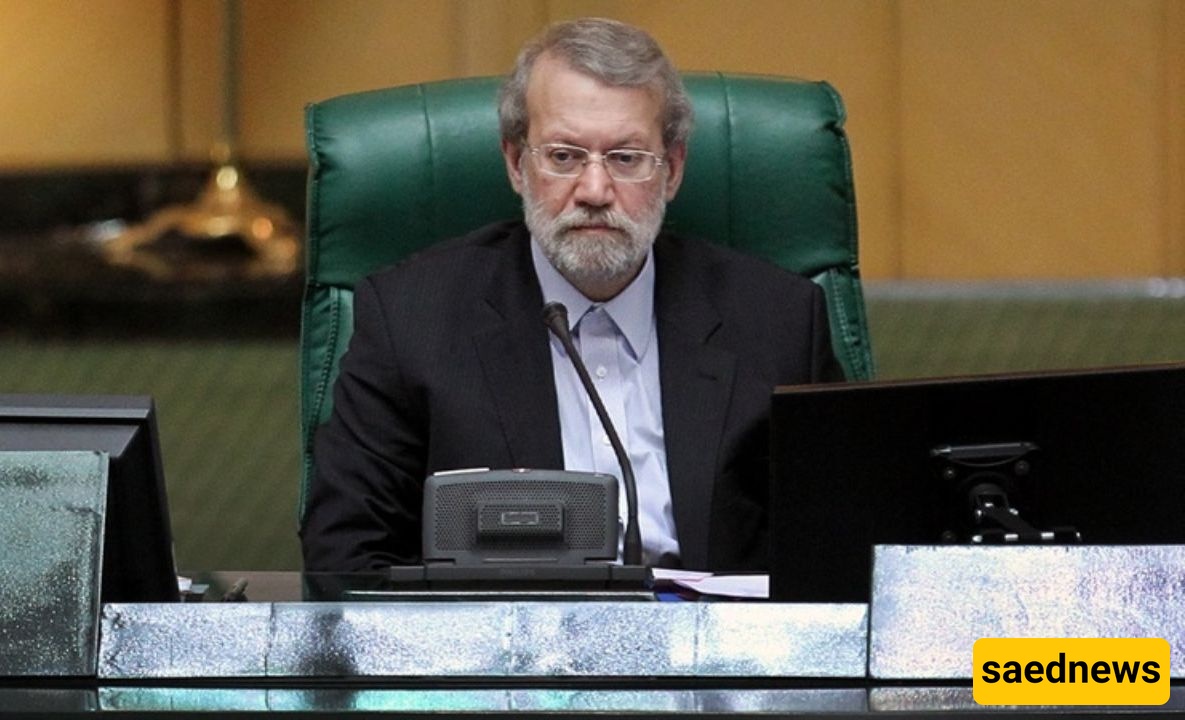SAEDNEWS: Ali Larijani’s appointment as Secretary of Iran’s Supreme National Security Council raises cautious optimism for reform, yet deep internal discord and structural challenges threaten to stymie meaningful change.

According to Saed News, Abbas Abdi, Fayyaz Zahed, and Mohammad Mohajeri jointly wrote in Etemad newspaper under the title "Expectations from ShAAM" [Supreme National Security Council]:
The appointment of Mr. Ali Larijani as a member and secretary of the Supreme National Security Council raises expectations among some optimists in society who hope for positive and breakthrough changes in domestic and foreign policy, as well as cultural and social strategies. Although this rise in expectations may stem from his personal qualities, the main source of hope is the interpretation of his appointment as a shift in approach. Without a change in approach, mere presence of an individual will not produce transformation but will only deepen disappointment.

Last year, during the presidential election, a similar sentiment prevailed. The rise of Pezeshkian created the public impression that the overarching system’s unspoken strategy was not limited to electing a figure different from the late Raisi. Many voters expected that the intellectual basis of the regime’s decisions on foreign relations, sanctions relief, internet filtering, and social restrictions would experience tangible change. Pezeshkian’s approach of consensus, though honestly and correctly articulated, failed to strike an effective balance between consensus and transformative change. Instead of fostering cooperation for national interest, it led opponents to pursue power consolidation and entitlement. Their rhetoric implied no fundamental change had occurred and the status quo would persist.
Therefore, when Pezeshkian opposed enforcement of the national security hijab law, it caused confusion and showed that consensus must be strengthened by the people's values. Conversely, the hardline resistance against lifting filtering—the key promise of Pezeshkian—was so intense that one year into the 14th government, conditions are worse and more regrettable than last year.
Regarding the hijab law, had the president not firmly enforced and warned about its implementation, Iranian society might have faced worse events similar to those in autumn 2022. In the arena of negotiations, opponents continue to assert themselves loudly in parliament and various state institutions. Changes in ShAAM should have started immediately after Pezeshkian’s rise, not waited for the heavy toll of the recent war. Politically, Larijani’s background aligns with moderate principlists, possibly enabling him greater freedom than Pezeshkian. At least in theory, his political, cultural, and even military discourse aligns better with Pezeshkian’s rivals, potentially offering fresh opportunities for the current government—if Larijani commits seriously to reforms. He is an experienced politician, philosophical engineer, versed in various fields, and closely connected to ruling circles. These are important but don’t imply he is a miracle worker capable of immediately resolving entrenched problems.
Larijani may have the motivation to cross the sea, but the necessary condition is a courageous, decisive decision by the regime to pull the political ship out of the current quagmire without hesitation. Currently, some officials delay any forward movement with their remarks, draining the energy and morale of the government and the people, making progress impossible. The only way forward is to remove shackles. If necessary, the legislature should be barred from passing laws or interventions that hinder improvement, postponing some impeachments and oversight. The judiciary should also exercise caution even when issuing lawful rulings that slow reform. We recall Imam Khomeini once said that “for the interest of the country and the regime, even foundational acts like prayer can be temporarily suspended” — let alone these self-constructed, sanctified taboos. Today’s situation is far more critical and demands its own solutions.
Undoubtedly, one of the greatest obstacles to adopting a national interest-based strategy in Iran is the lack of consensus. Within policy-making, structural discord is far worse than lack of consensus with the public. Internal consensus means decision-making bodies may debate differences, but once a decision is made, all officials must unconditionally support it. Criticism by experts and independent media is welcome and necessary, but officials who participate in decision-making cannot oppose the official line publicly. One cannot simultaneously be a member of the Supreme National Security Council and publicly oppose its decisions. Nor can an official media outlet promote policies counter to the official stance.
A parliament member elected by the establishment cannot also act as an opposition force. A Friday prayer leader cannot criticize the regime’s policy while benefiting from its platform. At worst, silence is permissible, but never public dissent. If someone wishes to oppose, they should resign first and then speak freely. Having major opponents or even enemies of the government embedded within the ruling structure is an unworkable and failed model. The root of these internal contradictions lies in misinterpretation of dual legitimacy and supervisory systems. While supporting pluralism publicly, unity in governance and policy is essential. Lack of internal consensus exhausts the regime’s energies through internal conflicts, as the hardliners did during Rouhani’s era, resulting in tragedies like November 2019 protests. This conduct also sends false, discouraging signals to the people and other countries. Resolving this is the responsibility of the Supreme National Security Council, especially its secretariat. Since the council’s policies are approved by the Leader without exception, all government bodies must implement them—even if outsiders oppose. The secretariat and Larijani personally must enforce this responsibility strictly. We hope Larijani acts decisively and systematically in this matter, unlike past practices.
On this basis, can we hope that the helmsman is indeed a different policy? Time will tell. Political conflict or disruption may have been tolerable for brief periods or episodes, as previously noted. If Pezeshkian’s appointment was a higher-level tactic to neutralize the 2022 crisis effects and system inefficiencies by mobilizing certain political forces, Larijani’s appointment must be seen as the second, albeit delayed, piece of this strategy. Based on this, we expect two types of actions: meaningful changes targeting exclusion of incompatible individuals and lobbies from the emerging mosaic. Changes likely will spread to state media and security-military institutions. This is due to two needs: the security structure and the official media apparatus, which had fostered complacency about military threats, convincing even the armed forces that the enemy dared not attack—ultimately leading to severe damage.
Can we say that changing the president and Larijani’s return, along with other probable changes, will pave the way for new governance strategies and revising past major policies? We should not rush to that conclusion. Even if it occurs, two problems remain: first, the limited scope and superficial nature of changes, with possible regression; limited changes are ineffective, costly, and gain no benefit. Second, the destabilizing pace of Iran’s developments far outstrips the sluggish pace of changes.

